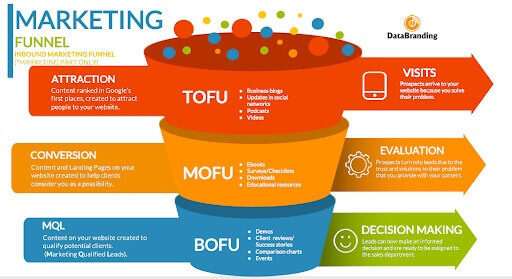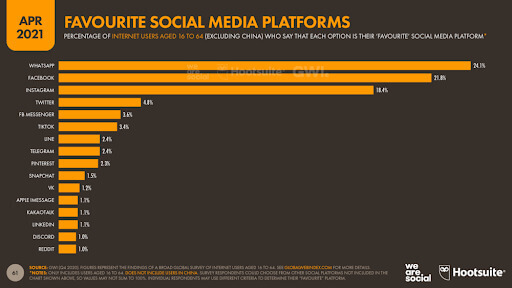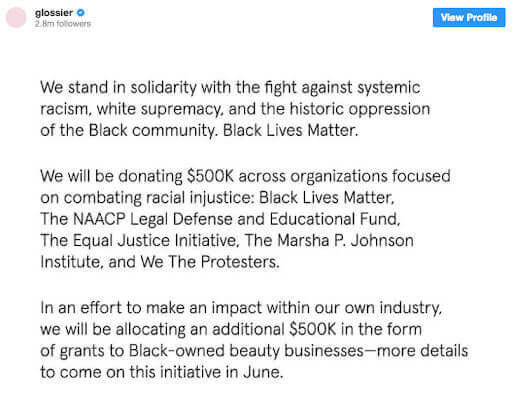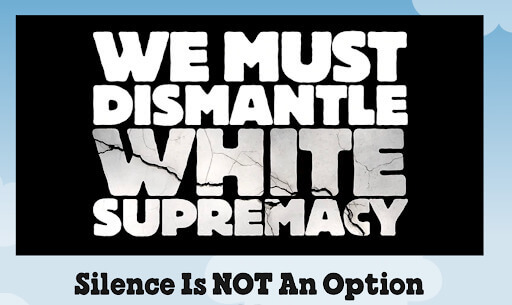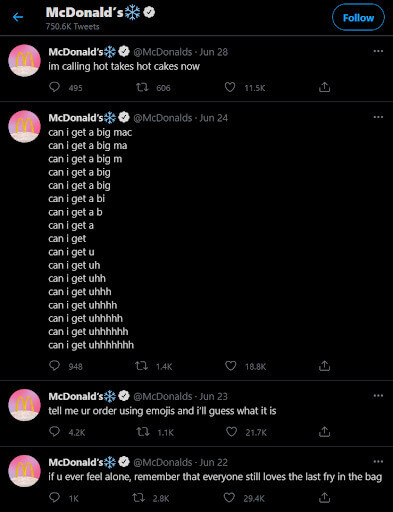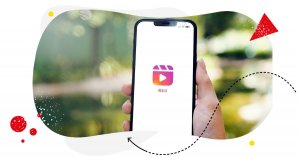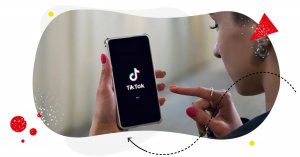Poor marketing and getting outcompeted are the key reasons why startups fail. If you’re starting a new business, you need to get your marketing right. Creating brand awareness early on is essential to attract customers and guide your business towards profitability.
Social media plays a crucial role in increasing brand awareness and finding new customers. Here is a comprehensive guide to improving brand awareness using social media for startups.
Why should startups use social media?
As a new business, you might be looking for a common playground that connects all demographics. Your search ends with social media. It offers access to a vast audience of every industry and product, and that too for free. It is not at all surprising that 73% of marketers consider social media effective in marketing and startup growth.
But why should you care about using social media? Here are the top reasons.
Branding
Branding is all about reaching your target audience, spreading the word about your brand, and getting recognized by consumers in your industry. Social media offers ample opportunities for startups to go viral and enhance their branding.
One of the best examples of brands going viral on social media is MTV’s Video Music Awards. MTV engaged with its followers on Instagram, Facebook, Twitter, Snapchat, and YouTube before the MTV VMAs aired on TV. As a result, the engagement went up by 129% and organic conversions by 331% in an era when watching TV is on a decline.
Early feedback
Startups need to collect early feedback to be able to provide the best version of their product to consumers. Social media is an effective channel for feedback collection. It allows you to launch product advertisement campaigns, share beta versions with fans, and get candid feedback. You can also delve into their engagement, issues, and usage patterns.
Growth and marketing
Several marketing channels are available for startups, such as offline advertising, TV ads, search engine ads, SEO, and more. However, social media offers a few advantages over other channels. It is affordable and measurable, enables laser-focused targeting, and drives more engagement. In fact, 56% of marketers feel social media drives the best brand engagement, followed by 22% for TV and 7% for email.
Meaningful relationships
In this business era, when customers have too many options, startups need to focus on building relationships with customers early on. Social media enables you to cultivate customer relationships by interacting with your audience, answering questions, and offering discounts and offers.
Market research
Social media monitoring can answer all questions regarding your customers and competitors. You can measure how engaged your customers are and how well they are responding to your campaigns. You can also analyze your competitors, including the strategies they are implementing and the engagement they are receiving.
In all, social media acts as an all-in-one channel where startups can increase awareness, promote and grow their business, get feedback, build customer relationships, and conduct market research.
Where does social media fit in the sales funnel?
Widespread confusion about social media, especially among new businesses, is where it fits in the marketing funnel. Let’s simplify this overly complex concept.
A traditional marketing funnel comprises six stages:
- Awareness
- Interest
- Consideration
- Conversion
- Loyalty
- Advocacy
From a lead generation and conversion perspective, the Awareness and Interest stages fall into Lead Generation (Top of the Funnel – TOFU), Consideration falls into Lead Nurturing (Middle of the Funnel – MOFU), and Conversion falls into Lead Conversion (Bottom of the Funnel – BOFU).
A common mistake startups make is they consider social media as a sales tool. Social media is not a sales tool; it’s a marketing tool.
It can increase the probability of sales, but it requires a sales strategy to complete a sale. Not that you can’t get sales on social media, but in most cases, it supports your sales efforts.
Social media is great for generating awareness and interest in your product, and it can also go a long way in nurturing your leads by connecting Facebook custom audiences and Typeform to gather your leads and trigger automated emails . Hence, it sits in the TOFU and MOFU stages of a traditional funnel.
Additionally, social media can be highly effective in nurturing customer loyalty and advocacy. By implementing a robust post-purchase social media engagement strategy, new brands can drive customer loyalty and turn their loyal customers into advocates.
How to leverage social media to increase brand awareness?
Having discussed the importance of social media for startups and where it fits in the marketing funnel, let’s now delve into some effective ways of leveraging social media for marketing and brand awareness.
Decide who you want to be
The first step in any successful social media strategy is to determine who you are as a brand and how you want your customers to perceive you. Do you want to present yourself as a friendly, approachable character with whom people can connect on a personal level? Or, do you want to be a serious and sophisticated role model people look up to?
Keep in mind that once you decide on your personality, it becomes a part of your brand. You can switch your personalities later, as it will confuse your audience and adversely affect your efforts on social media.
Identify your audience
After deciding who you are, you need to identify your target audience. What type of customers are you trying to engage? Are they young working professionals living in metro cities? Are they single moms looking to start their entrepreneurial journey? Are they small business owners wanting to increase revenue and profits?
If you don’t specify who you are targeting, your social media content and campaigns will come out as directionless and generic.
Be sure to create ideal customer profiles (ICPs) and buyer personas to segment your audience better and make your social media marketing efforts more focused.
Pick the right channels
The next important step is to choose the right social channels. As of 2021, at least 32 social platforms with more than 100 million monthly active users are there. Hence, deciding which channels to use or overlook can be confusing.
Firstly, having a presence on more channels won’t increase your success rate or help you achieve your goals. Two or three effective channels are sufficient for startups. If we go by the number of monthly active users, WhatsApp, Facebook, YouTube, Instagram, Twitter, and TikTok are the most popular channels and can be safe choices for new businesses. However, less popular channels like Pinterest, Snapchat, and LinkedIn can also help you achieve goals.
A better approach to selecting the right channels is to determine where your target audience hangs out. If most of them are on Instagram, use Instagram. If they are working professionals, you might find them on LinkedIn. In that case, use LinkedIn.
Also, don’t forget to promote your social media profiles on your website and other marketing materials. You can use QR codes to link your social profiles to offline materials like print ads and brochures. To do that, you’ll need to create a customized QR code using a QR Code Generator, link it to your social profile, and put it up on your advertising materials. Users will be able to scan the code and connect with you on social media.
Develop a strategic social media content strategy
Content is king on social media. Once you have selected the best social media platform for your business, you need to develop a content strategy. You must create content that adds value to your audience while constantly increasing brand awareness and supporting your business goals.

Save time publishing your social media content
Add posts to Facebook, Instagram, Twitter, LinkedIn, and Google My Business at the same time, using one dashboard.
Try NapoleonCat free for 14 days. No credit card required.
Creating content on social media is a huge topic, and it largely depends on the platform you are using. That said, here’s a quick overview of what type of content you should publish on social media.
Social media users prefer visual content, including images, videos, infographics, GIFs, etc. Of these visual content types, startups should pay close attention to videos and infographics. Research from Cisco shows that 82% of all IP traffic will come from videos by 2022.
You can create various types of videos, such as:
- Education videos
- Explainer/tutorial videos
- Product videos
- Testimonial videos
- Demonstration/instruction videos
- Brand films
- Company culture videos
- User-generated videos
The consumption of live videos is skyrocketing, and it has become a major trend among businesses. Live video is expected to make up 17% of the internet video traffic by 2022.
Along with videos, startups should invest in infographics. The use of infographics has soared over the past few years, especially among B2B marketers. Over 65% of B2B marketers use infographics.
Hop on to the latest trends
Social media is fast-paced. While there is a place for evergreen content, brands need to continuously hop on new trends and hot topics to keep their audience engaged. A great example is the #blacklivesmatter movement that took social media by storm. Several brands decided to contribute to the change.
Glossier, a beauty and skincare brand, made a statement to uplift the black business.
Ben & Jerry’s took a bold approach with their “We Must Dismantle White Supremacy” campaign.
But jumping onto sensitive issues is up to you. Find a topic that is trending and find a way to associate it with your brand. It’s all about being authentic.
Become human
People want to connect with people, not companies or corporations. If you present yourself as an organization looking for customers, you will never receive the intended engagement. Instead, bring a human element to your brand.
There are two ways to humanize your brand on social media. The first is to use informal language. See how McDonald’s does that.
The second way is to share memes. There’s hardly any social media user whose eyes won’t light up looking at a hilarious meme. Here’s a good one from Ruffles.
Prioritize engagement
If we were to list the goals you could achieve on social media, increasing customer engagement would be on the top. Social media is an excellent engagement tool, provided that you take the right approach.
Here are some effective techniques to engage your social media audience.
- Post Regularly: As a rule of thumb, new businesses should post at least thrice a day on their social profiles.
- Reply to Comments and Messages: When your followers comment on your posts or send you a message, they expect a response. Reply to them promptly to maintain high engagement levels (the same rule applies to Facebook ads comments!)
- Go Live: Doing live streams can be highly effective in increasing engagement. A Forrester report showed that users watched live videos 10-20x longer than pre-recorded videos.

Need help managing all the comments, messages, and reviews?
Track and reply to all social media conversations using a single dashboard. Cut down on the time you spend on replying by as much as 66%.
Try NapoleonCat free for 14 days. No credit card required.
Forget about selling
As discussed, social media is not a sales tool. You can, for sure, promote your products and share offers once in a while. But the majority of your content on social media should either entertain or inform your followers.
The 80/20 rule works well on social media. According to the rule, 80% of your content should be non-promotional, whereas the rest 20% should be promotional.
That said, don’t shy away from promoting your products on social media. If done in the right balance, it can help you generate new leads and customers.
Combine organic with paid advertising
Every social media platform offers advertising options. Though optional, brands can enhance their social media marketing efforts by integrating their organic content with paid advertising.
Organic content marketing is highly beneficial, but building an audience takes time. And with platforms like Facebook and Twitter reducing the organic reach of brands, paid advertising has become an essential marketing tool on social media.
Track, measure, and improvise
The final step is to track and measure the effectiveness of your social media campaign. You can do so by tracking various metrics, such as:
- Total social media followers
- Impressions and reach
- Engagement – likes, comments, and shares
- Volume and sentiment
- Click-through rate and website visits.
- Conversion rate
- Social channels revenue
Please note that each business uses social media differently. The key performance indicators (KPIs) you track will depend on your social media goals and strategies.
Wrap up
Social media is the best platform for new businesses to build brand awareness. It’s free to use and allows you to reach billions of users in a cost-effective way. However, with competition on social media continuously increasing, startups need to take a strategic approach to social media marketing.


